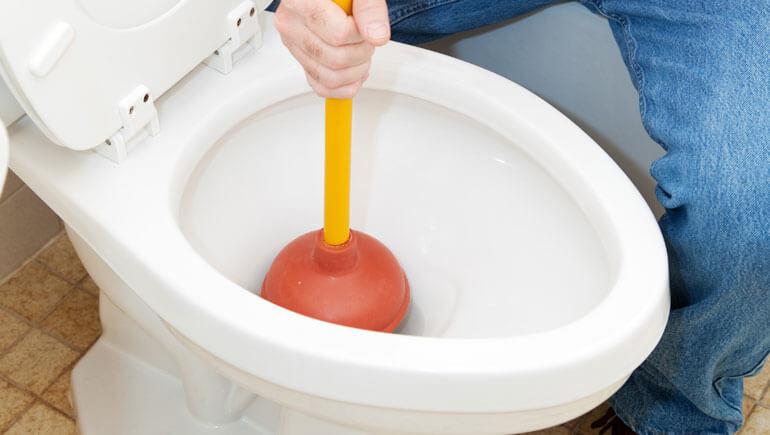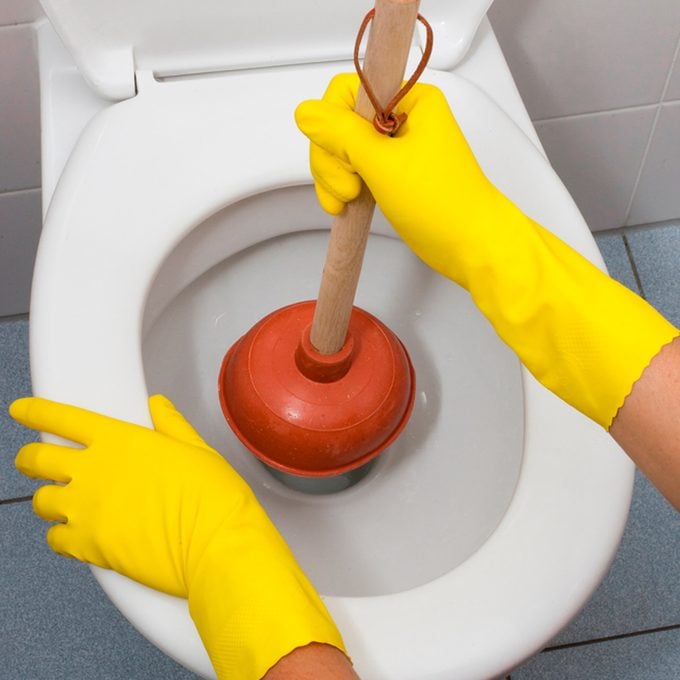Effective Plungers and Drain Cleaner Use: Key Advice
Effective Plungers and Drain Cleaner Use: Key Advice
Blog Article
Any individual maintains their unique way of thinking in relation to How to Unclog Your Sink with a Plunger.

Intro
Correct maintenance of family drains pipes is crucial for protecting against blockages and guaranteeing smooth water circulation. One of the secret devices in every property owner's toolkit is the bettor, along with various drain cleansers developed to deal with persistent clogs properly. This short article explores just how to make use of plungers and drainpipe cleansers successfully to maintain your drains streaming easily.
Section 1: Recognizing Bettors
Kinds of Plungers
There are a number of kinds of plungers offered, each designed for different types of drains pipes and blocks. One of the most common kinds include cup plungers, flange bettors, and accordion plungers.
How Plungers Job
Plungers deal with the concept of creating stress and suction to dislodge blockages. When appropriately applied over a drainpipe, they develop a vacuum that can pull out debris or separate blockages.
Picking the Right Plunger
Selecting the right plunger relies on the kind of drain and the nature of the blockage. Cup bettors are ideal for sinks and tubs, while flange plungers are better suited for toilets because of their style.
Usual Errors with Bettors
Avoiding these blunders makes sure efficient plunging: inappropriate seal around the drainpipe, inadequate pressure, and unclear bordering particles.
Area 2: Using Plungers Efficiently
Preparation
Before plunging, guarantee the plunger covers the drainpipe entirely and creates a tight seal. Clear any type of noticeable debris around the drainpipe opening.
Strategy
Begin with mild plunging movements to construct suction. Boost pressure progressively, using a stable rhythm. Repeat as required until the drainpipe clears.
Repairing Tips
If diving doesn't function, attempt readjusting the seal, using petroleum jelly for a far better seal, or utilizing a different type of plunger.
Area 3: Recognizing Drainpipe Cleaners
Types of Drainpipe Cleansers
Drain pipes cleaners can be chemical or enzymatic. Chemical cleansers make use of solid chemicals to liquify blockages, while chemical cleaners use all-natural enzymes to break down organic matter.
How Drainpipe Cleaners Job
Chemical cleaners respond with obstructions to liquify them, while chemical cleansers break down natural materials like hair and grease without damaging pipelines.
Security Factors to consider
Always put on gloves and eye defense when making use of chemical drainpipe cleansers. Guarantee sufficient air flow and comply with supplier directions very carefully.
Eco-Friendly Alternatives
Think about utilizing vinegar and baking soda or enzyme-based cleaners for environment-friendly options that are much safer for pipes and the atmosphere.
Section 4: Using Drainpipe Cleaners Properly
Application Strategies
Pour chemical cleansers straight right into the drainpipe opening. Permit them to work for the advised time before flushing with hot water. Enzymatic cleaners need to sit overnight.
Safety measures
Stay clear of blending different kinds of cleaners, as this can produce harmful fumes. Never use chemical cleansers along with a bettor, as spilling can take place.
Managing Persistent Clogs
For consistent blockages, take into consideration utilizing a pipes snake or calling a professional plumbing to avoid damages to pipelines.
Verdict
In conclusion, recognizing how to utilize plungers and drainpipe cleansers properly is vital for preserving healthy and balanced plumbing systems. By choosing the right tools and strategies, home owners can deal with minor obstructions and prevent major plumbing issues down the line.
How to Use a Plunger to Unclog a Drain
The humble plunger is a simple yet effective tool for breaking clogs in sinks, tubs and toilets. This handy tool is easy to use. You can make the most of its power if you understand how it works. Ready to dive in? Here’s what you need to know.
Safety First!
Never use a plunger with drain chemicals. Water will splash as you work, and the chemicals can spatter, burning skin and eyes. It’s a good idea to use rubber gloves and wear safety goggles when you work on a clog.
Choose the Right Tool for the Job
Plungers come in two different styles. Sinks, bathtubs and showers require a cup plunger. Like its name suggests, the rubber end is shaped like a cup. Use a flange plunger on toilets. These plungers have a rubber funnel extending from the cup. A plunger needs to be big enough to cover the drain.
Ready, Set, Plunge!
Coat the rim: Coat the plunger rim with petroleum jelly. This helps make a better seal.
Block outlets: Hold a wet rag over nearby outlets such as the overflow vent or the drain in a second sink.
Release air: Insert the plunger at an angle into the water. Water will displace air in the cup. A water-filled cup is more forceful than one filled with air.
Keep the plunger upright: Hold the plunger perpendicular to the drain. Use fast, forceful strokes, but make the first stroke gentle. The first stroke can create a splash if the cup still contains air. Thrust the plunger 15 to 20 times.
Snap off the plunger: The final stroke should be a strong upward motion that ends when the plunger snaps off the drain.
Repeat the process: you may need to repeat this sequence several times. When the water drains away, your work is done. High-five! https://plumbernw.com/blog/how-to-use-a-plunger-to-unclog-a-drain/

Application Strategies
Pour chemical cleansers straight right into the drainpipe opening. Permit them to work for the advised time before flushing with hot water. Enzymatic cleaners need to sit overnight.
Safety measures
Stay clear of blending different kinds of cleaners, as this can produce harmful fumes. Never use chemical cleansers along with a bettor, as spilling can take place.
Managing Persistent Clogs
For consistent blockages, take into consideration utilizing a pipes snake or calling a professional plumbing to avoid damages to pipelines.
Verdict
In conclusion, recognizing how to utilize plungers and drainpipe cleansers properly is vital for preserving healthy and balanced plumbing systems. By choosing the right tools and strategies, home owners can deal with minor obstructions and prevent major plumbing issues down the line.
How to Use a Plunger to Unclog a Drain
The humble plunger is a simple yet effective tool for breaking clogs in sinks, tubs and toilets. This handy tool is easy to use. You can make the most of its power if you understand how it works. Ready to dive in? Here’s what you need to know.
Safety First!
Never use a plunger with drain chemicals. Water will splash as you work, and the chemicals can spatter, burning skin and eyes. It’s a good idea to use rubber gloves and wear safety goggles when you work on a clog.
Choose the Right Tool for the Job
Plungers come in two different styles. Sinks, bathtubs and showers require a cup plunger. Like its name suggests, the rubber end is shaped like a cup. Use a flange plunger on toilets. These plungers have a rubber funnel extending from the cup. A plunger needs to be big enough to cover the drain.
Ready, Set, Plunge!
Coat the rim: Coat the plunger rim with petroleum jelly. This helps make a better seal. Block outlets: Hold a wet rag over nearby outlets such as the overflow vent or the drain in a second sink. Release air: Insert the plunger at an angle into the water. Water will displace air in the cup. A water-filled cup is more forceful than one filled with air. Keep the plunger upright: Hold the plunger perpendicular to the drain. Use fast, forceful strokes, but make the first stroke gentle. The first stroke can create a splash if the cup still contains air. Thrust the plunger 15 to 20 times. Snap off the plunger: The final stroke should be a strong upward motion that ends when the plunger snaps off the drain. Repeat the process: you may need to repeat this sequence several times. When the water drains away, your work is done. High-five! https://plumbernw.com/blog/how-to-use-a-plunger-to-unclog-a-drain/

I hope you enjoyed reading our section on Here's How to Correctly Use a Toilet Plunger. Many thanks for taking the time to read our piece of content. I beg you take the opportunity to share this entry if you enjoyed reading it. We treasure your readership.
Click Here Report this page